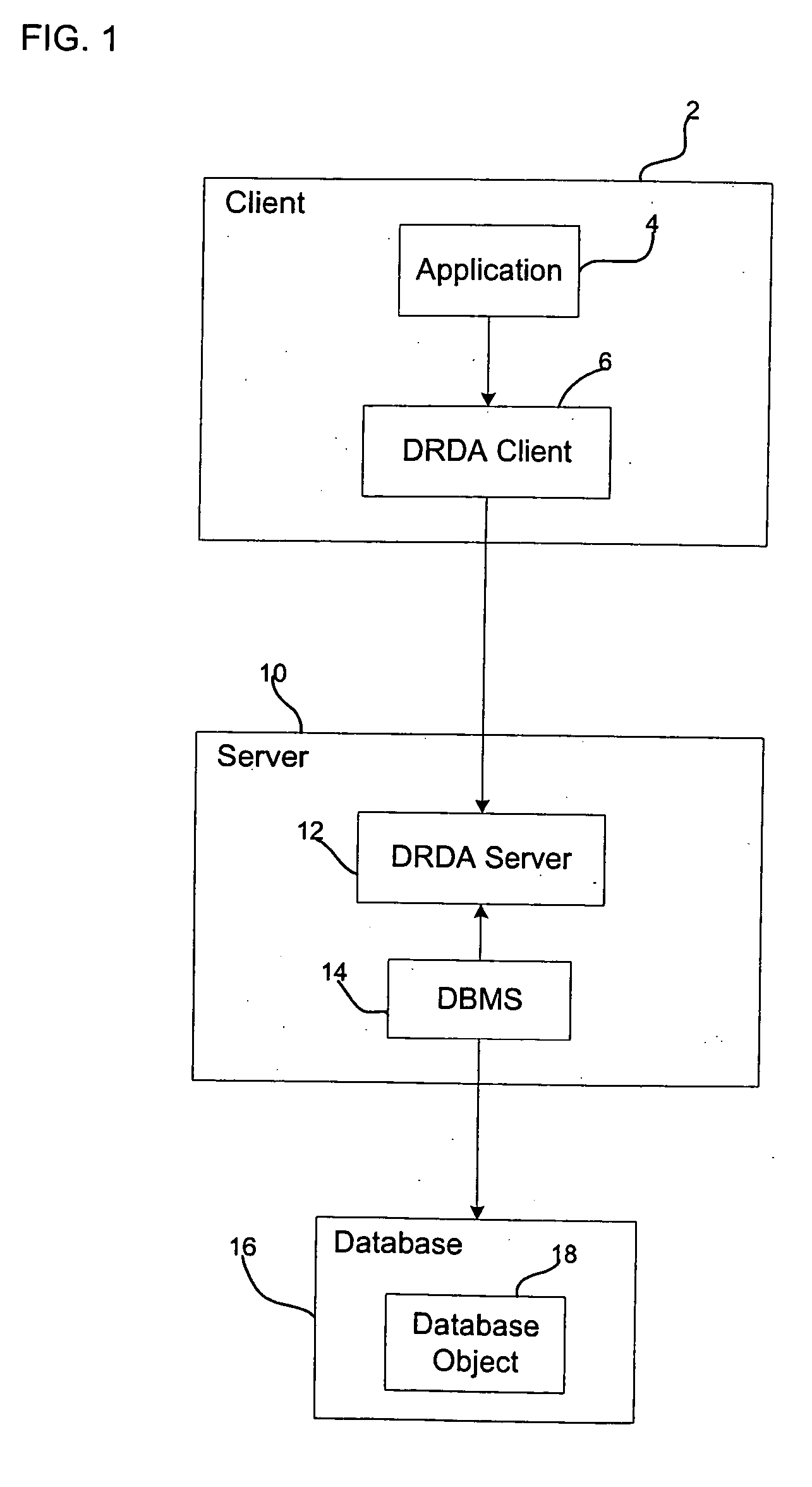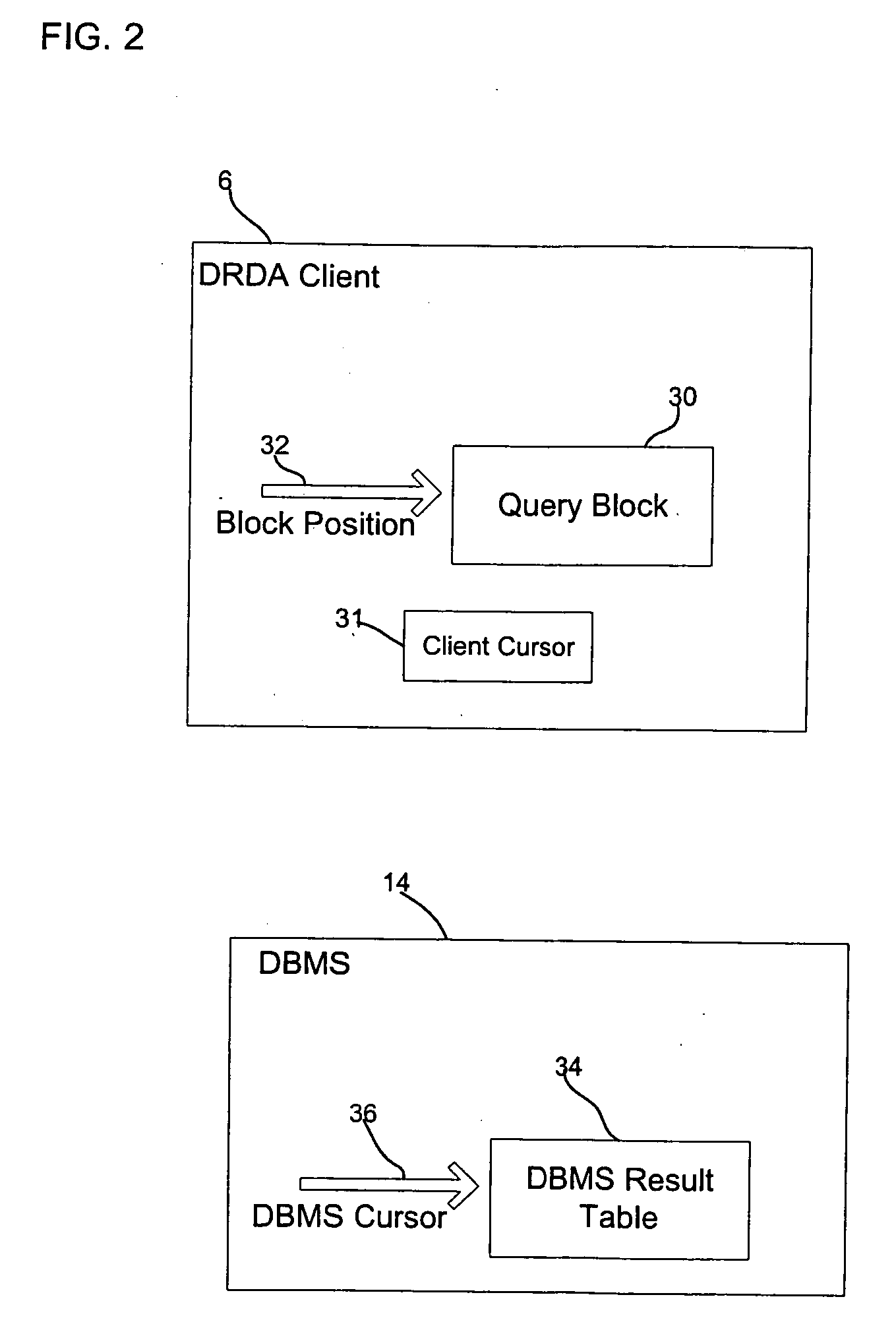Method, system, and program for implementing scrollable cursors in a distributed database system
a distributed database and scrollable cursor technology, applied in relational databases, data processing applications, instruments, etc., can solve the problems of high overhead of communicating across the network, insensitive or sensitive to updates, and the updateable (read-only) cursor does not allow the application program, so as to minimize network traffic, reduce the number of requests, and optimize the performance of scrollable cursor applications
- Summary
- Abstract
- Description
- Claims
- Application Information
AI Technical Summary
Benefits of technology
Problems solved by technology
Method used
Image
Examples
embodiments and conclusions
ALTERNATIVE EMBODIMENTS AND CONCLUSIONS
[0056] This concludes the description of the preferred embodiments of the invention. The following describes some alternative embodiments for accomplishing the present invention.
[0057] The preferred embodiments may be implemented as a method, program using standard programming and / or engineering techniques to produce software, firmware, hardware, or any combination thereof. The programs and code defining the functions of the preferred embodiments can be delivered to a computer via a variety of information bearing media, which include, but are not limited to, computer-readable devices, firmware, programmable logic, memory devices (e.g., EEPROMs, ROMs, PROMS, RAMs, SRAMS, etc.) “floppy disk,” CD-ROM, a file server providing access to the programs via a network transmission line, wireless transmission media, signals propagating through space, radio waves, infrared signals, etc. Still further the code in which the preferred embodiments are impleme...
PUM
 Login to View More
Login to View More Abstract
Description
Claims
Application Information
 Login to View More
Login to View More - R&D
- Intellectual Property
- Life Sciences
- Materials
- Tech Scout
- Unparalleled Data Quality
- Higher Quality Content
- 60% Fewer Hallucinations
Browse by: Latest US Patents, China's latest patents, Technical Efficacy Thesaurus, Application Domain, Technology Topic, Popular Technical Reports.
© 2025 PatSnap. All rights reserved.Legal|Privacy policy|Modern Slavery Act Transparency Statement|Sitemap|About US| Contact US: help@patsnap.com



